In 2024, the interior design landscape is embracing an exciting and unique trend: Western Gothic. This style merges the rustic, frontier spirit of Western design with the dark elegance and ornate details characteristic of Gothic architecture. Hestya, with its team of in-house expert designers, capability for custom-made furniture, and innovative scanning technology, is ideally positioned to bring this bold design trend to life in your home.
Introduction to Western Gothic Design
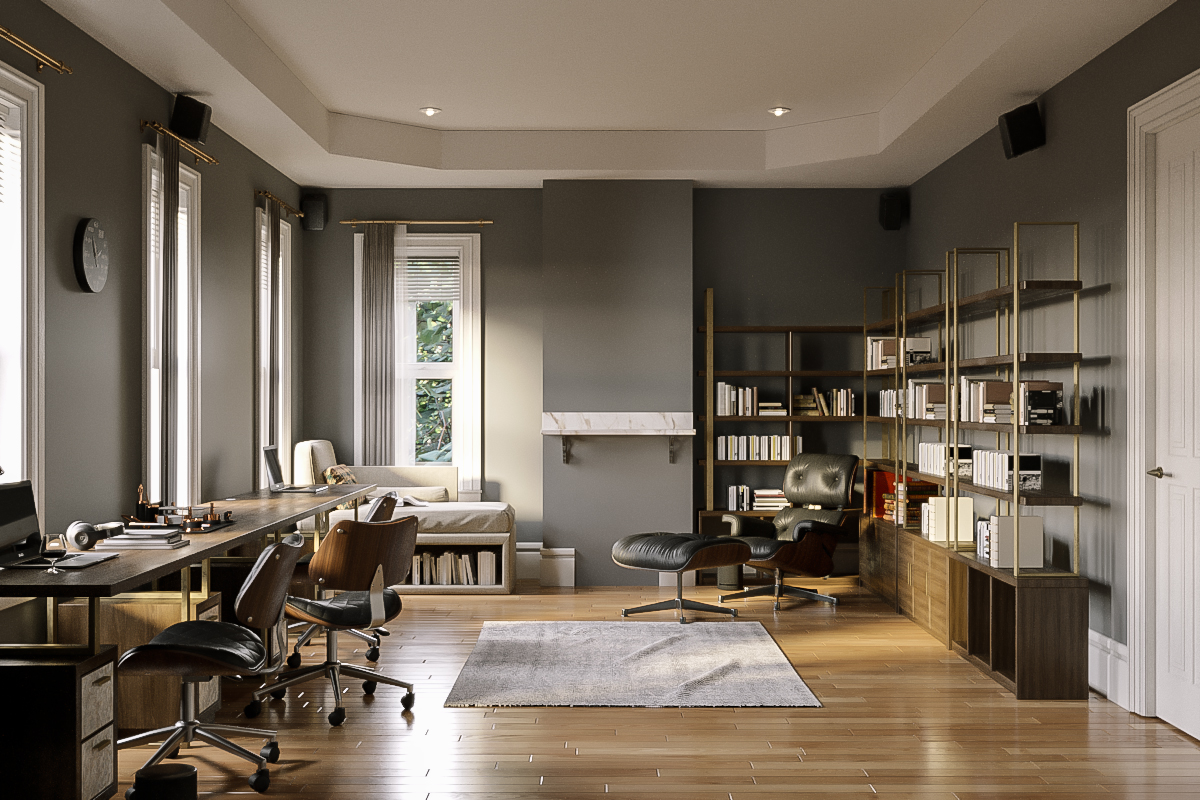
Western Gothic design is a daring blend of two distinct styles. It combines the rugged, naturalistic elements of the Western aesthetic with the dramatic, mysterious allure of Gothic design, creating spaces that are both intriguing and comforting.
1. The Western Gothic Palette
The Western Gothic Palette, a captivating concept in the 2024 interior design trends, represents a bold fusion of styles that skillfully intertwines the mystique of gothic aesthetics with the earthy, open-air feel of Western design. This innovative blend creates a unique atmosphere, offering a refreshing take on traditional design principles. The palette itself is an artful mix of deep, moody tones and brighter, more natural hues. Imagine the rich, dark shades of midnight blue and forest green, evoking the gothic's classic allure and mystery. These are beautifully contrasted with the warm, sandy tones of the West, like terracotta and sun-bleached beige, bringing a sense of balance and warmth to the space.
This striking color scheme is more than just a visual feast; it's a narrative of two distinct styles harmoniously converging. The Western Gothic Palette invites homeowners and designers alike to explore a realm where the dramatic flair of gothic architecture meets the rustic charm of Western landscapes. It's a celebration of boldness and subtlety, where intricate gothic patterns and textures play against the simplistic, yet profound beauty of Western design elements. Think of ornate, gothic-inspired wallpaper alongside rough-hewn wooden furniture, or luxurious velvet drapes framing a view of a stark, yet serene desert landscape.
The versatility of the Western Gothic Palette is one of its most appealing aspects. It works seamlessly in various settings, from an urban loft to a countryside home, always bringing a touch of sophistication and intrigue. This palette is not just a trend; it's a statement. It speaks to those who dare to blend the unconventional with the traditional, creating spaces that are both inviting and awe-inspiring.
2. Furniture: Blending Styles
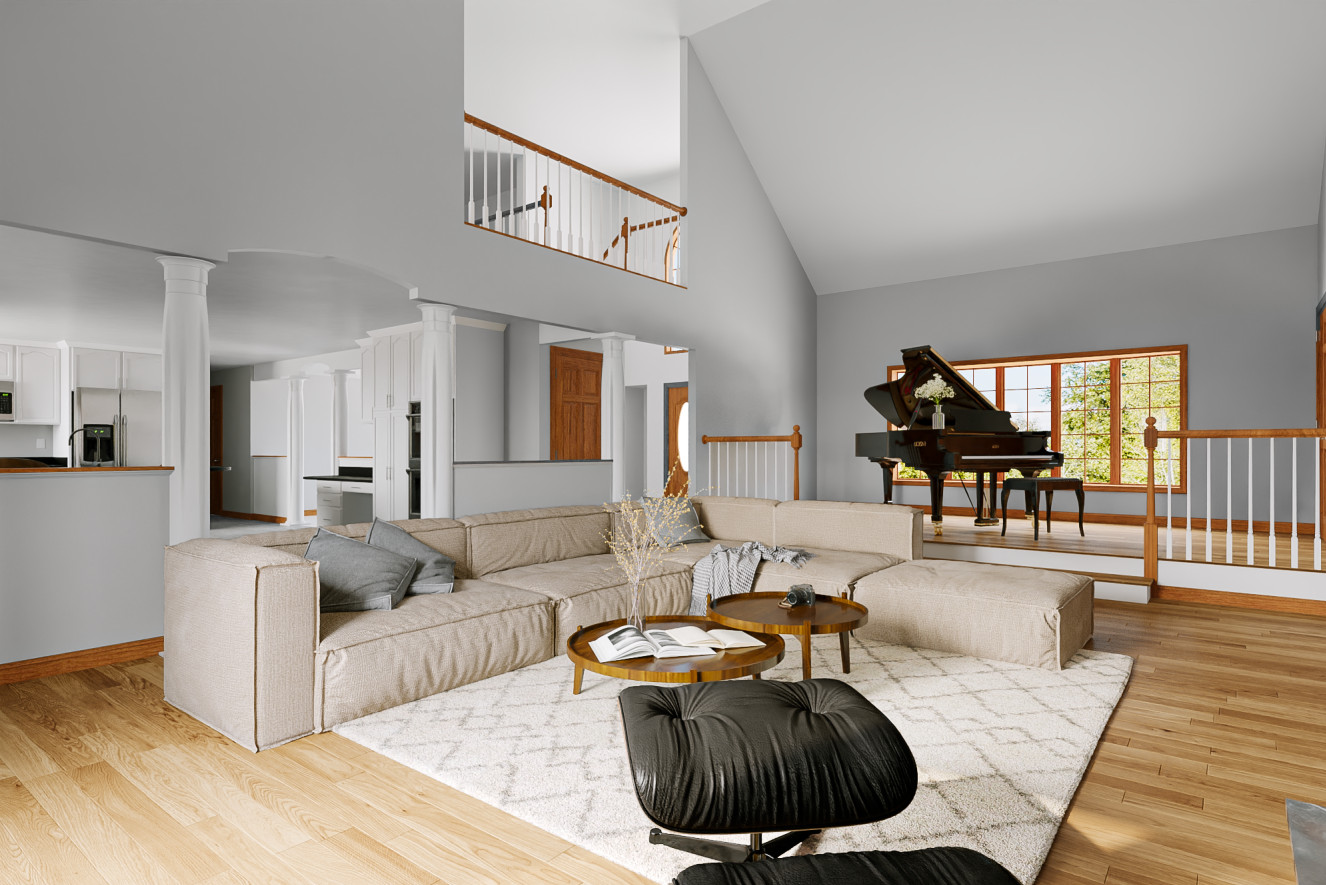
The key to successfully blending these styles lies in finding a balance that respects the essence of each while creating a new, unified look. Consider a solid, rustic wooden dining table when designing your dining room, its natural imperfections and grain proudly on display, paired with more ornate, Gothic-style chairs. These chairs, perhaps in a deep, rich color with intricate carvings, offer a stark yet harmonious contrast to the table's simplicity. Such a combination not only provides a visual feast but also tells a story of diverse influences coming together.
In living room designs, the blend can be seen in the juxtaposition of plush, velvet gothic sofas, their luxurious textures and dark tones offering a nod to the opulence of Gothic design, against the backdrop of a Western-style stone fireplace or a wall adorned with rugged, natural wood. Here, the interplay of textures and materials plays a crucial role, with each piece of furniture contributing its unique character to the overall ambiance.
Accessories and smaller furniture pieces also play a pivotal role in this blend. A Gothic-style ornate lamp or chandelier can serve as a stunning focal point in a room otherwise dominated by Western simplicity. Similarly, a Western-style rugged, leather ottoman can add warmth and functionality to a more elaborately decorated Gothic space.
3. Textural Contrast in Decor Your Home
In Western Gothic decor, the interplay of diverse textures adds a dynamic and dramatic element, enhancing the overall aesthetic and creating a more engaging environment.
Imagine the rough, natural texture of exposed wooden beams or barn wood paneling, characteristic of Western design, set against the smooth, opulent feel of Gothic velvet drapes or silk upholstery. This juxtaposition not only creates a striking visual impact but also evokes a sensory experience that is both inviting and intriguing. The rustic charm of Western textures provides a grounded, earthy backdrop, allowing the more luxurious Gothic textures to stand out and captivate.
In a Western Gothic space, the contrast can be further emphasized with the addition of metal accents. Wrought iron, often used in Gothic design for its intricate patterns and sturdy presence, can be integrated in the form of candle holders, light fixtures, or furniture hardware. This metallic texture, with its cool, hard feel, contrasts beautifully with the warmth and softness of Western-style textiles, such as wool throws or leather upholstery.
Flooring and rugs in these spaces also play a crucial role in textural contrast. A plush, ornate Gothic rug on a rugged hardwood floor creates an island of luxury amidst a sea of simplicity. The tactile experience of moving from the hard, smooth surface of the floor to the softness of the rug adds an unexpected and delightful dimension to the room.
4. Lighting: Creating an Atmosphere
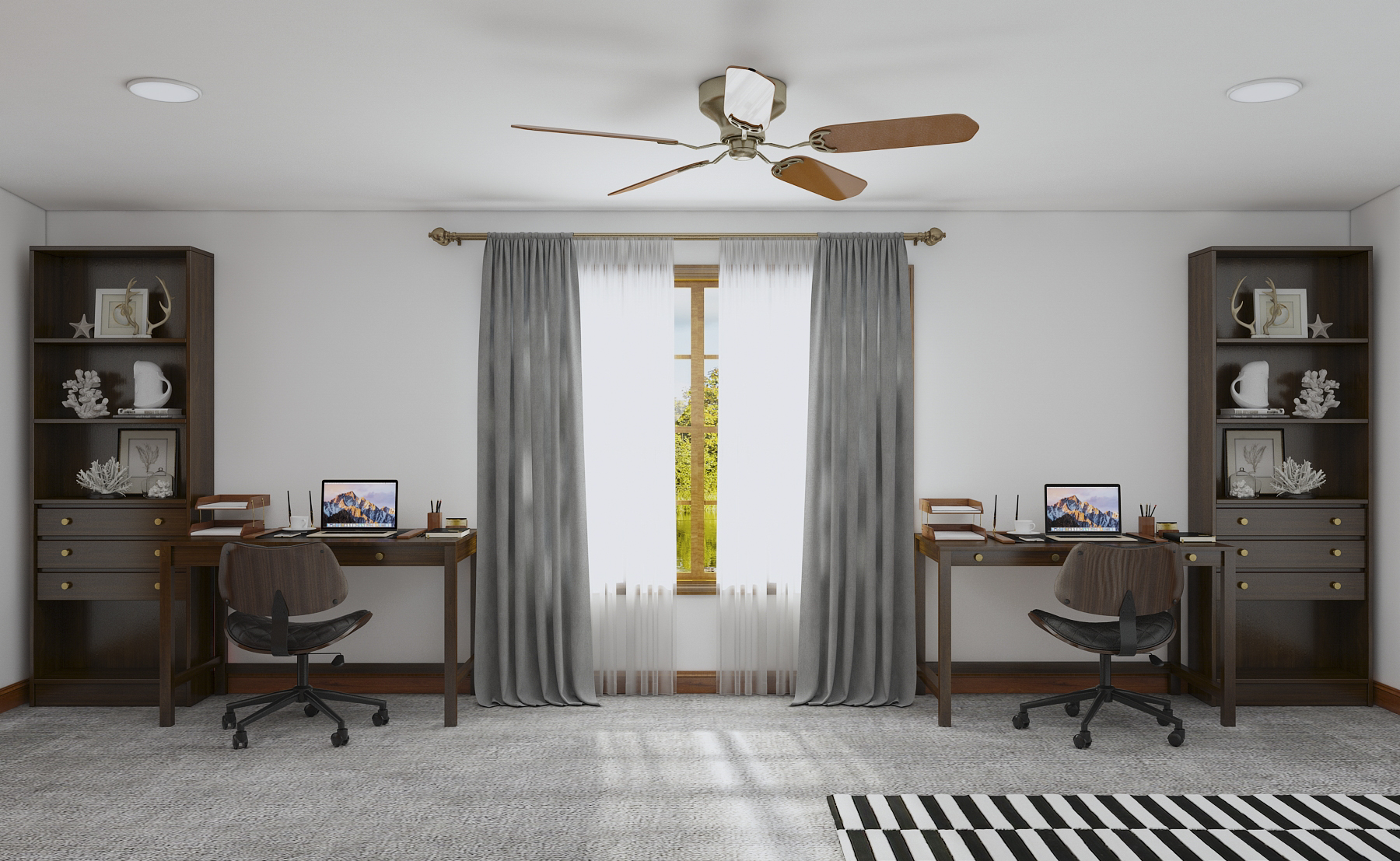
This fusion style, marrying the rustic charm of the West with the mystique of Gothic design, relies heavily on lighting to set the mood and highlight the unique features of the space. The interplay of light and shadow, brightness and dimness, becomes an essential tool in crafting environments that are not just seen but felt.
Central to the Western Gothic lighting scheme is the concept of layered lighting. This involves a combination of different light sources at various levels and intensities to create a dynamic and versatile atmosphere. Overhead lighting, perhaps through a Gothic-inspired chandelier or pendant lights, casts a broad glow, accentuating the high ceilings typical of Gothic architecture. These fixtures, often in wrought iron or dark metals with intricate designs, serve as a focal point, immediately drawing the eye upwards and setting a tone of elegance and grandeur.
Simultaneously, lower level lighting, such as table lamps or wall sconces, introduces the warmth and intimacy of Western design. These lights, often in warmer tones with rustic finishes like aged copper or distressed wood, cast softer, more diffused light. They are perfect for creating cozy nooks or highlighting specific areas, like a reading corner or an art piece. The contrast between the grand, dramatic overhead lights and the more grounded, intimate lower lights encapsulates the essence of the Western Gothic style.
Another aspect of lighting in this theme is the use of candles or candle-like lighting. The flickering, natural light of candles, possibly housed in Gothic-style candelabras or lanterns, adds an element of old-world charm and mystery. This softer, more organic light source can beautifully complement the modern lighting fixtures, creating a link between past and present, a key characteristic of the Western Gothic style.
Finally, the play of light and shadow is critical in Western Gothic interiors. Strategic lighting can accentuate the textural contrasts inherent in the style – the roughness of Western materials against the smoothness of Gothic finishes. Shadows cast by intricate Gothic patterns can create an air of mystery and depth, adding to the overall ambiance.
5. Architectural Elements and Artwork
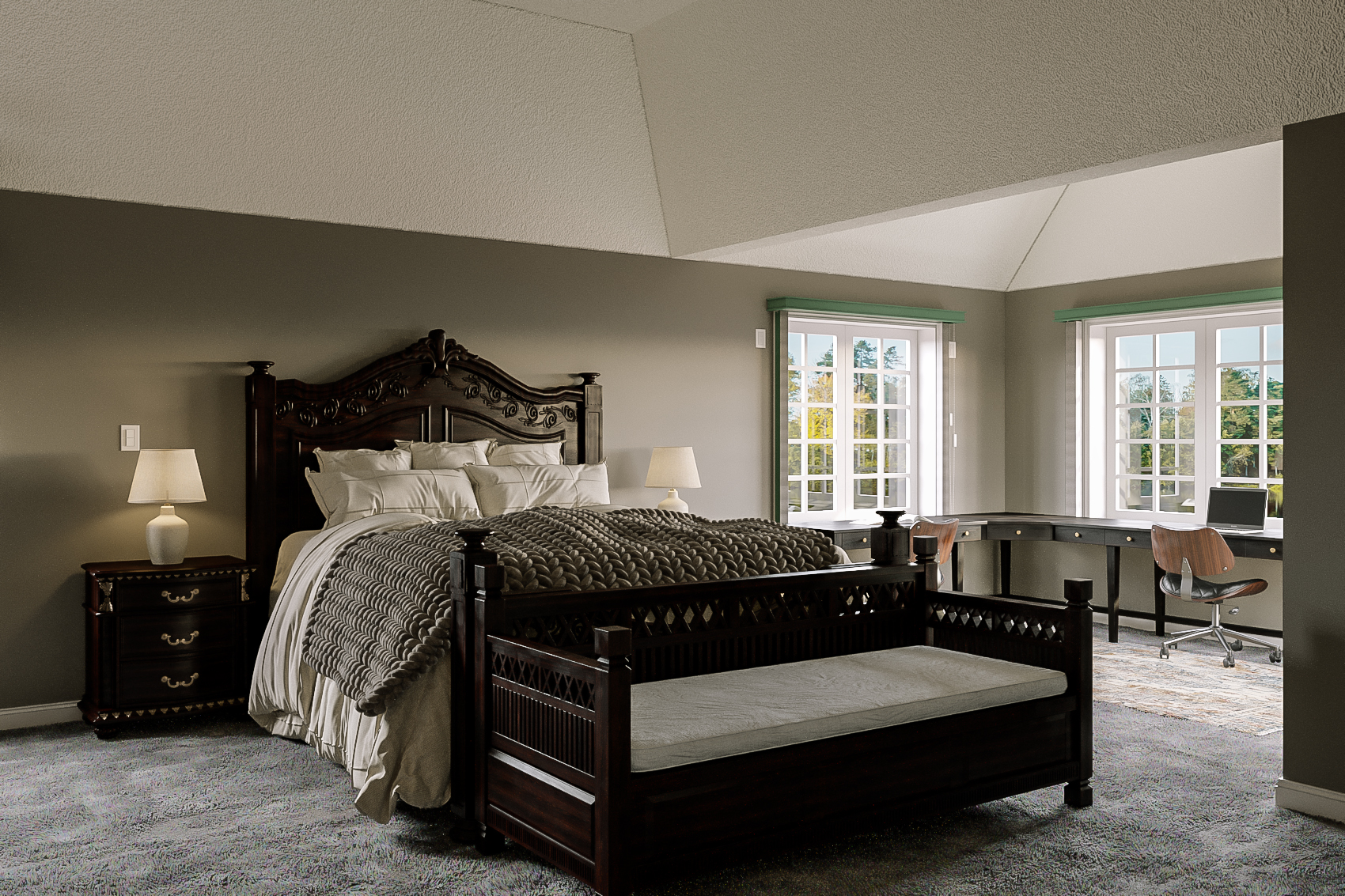
Architectural Elements:
- Gothic Arches and Windows: One of the most distinctive features of Gothic architecture is its pointed arches and tall, narrow windows. Incorporating these elements, whether through actual construction or as decorative motifs, can instantly evoke a Gothic feel. Stained glass, another hallmark of Gothic design, can be used in windows or as wall art to add color and drama.
- Exposed Wooden Beams: To bring in the Western element, exposed wooden beams are ideal. These beams, often seen in rustic barns and farmhouses, add a sense of ruggedness and natural charm. They contrast beautifully with the more refined Gothic details, grounding the space in simplicity.
- Stone and Brickwork: Both Western and Gothic styles can incorporate stone or brickwork. In a Western Gothic space, a stone fireplace or brick accent wall can serve as a focal point, blending the solidity and earthiness of Western design with the historical depth of Gothic architecture.
Artwork:
- Gothic-Inspired Art: Artwork featuring Gothic themes, such as medieval scenes, Gothic arches, or mystic symbols, can enhance the theme's dramatic flair. Gothic art often features rich colors and intricate details, adding depth and intrigue to the space.
- Western Art and Motifs: To balance the Gothic drama, Western art can be introduced. This might include landscape paintings of open plains or deserts, Native American art, or even modern interpretations of Western themes. Artwork featuring horses, cattle, or rustic scenes can also tie in the Western element.
- Sculptures and Carvings: Both Gothic and Western styles can be celebrated through sculptures and carvings. Gothic-style sculptures might include figures from mythology or history, while Western carvings could feature animal motifs or scenes from nature.
- Contemporary Interpretations: Merging contemporary artwork that abstractly represents Gothic and Western themes can also be a striking addition. This modern take can offer a fresh perspective, blending historical motifs with a contemporary aesthetic.
6. Accessorizing with Western and Gothic Elements
The key to successful accessorizing in this fusion style is to select items that not only stand out individually but also work together to enhance the overall theme.
One effective way to bring Gothic elements into the space is through the use of ornate, decorative items. Think of intricately designed mirrors with elaborate frames, perhaps in dark woods or aged metals, which not only serve as functional pieces but also as stunning artworks. Gothic-style candle holders, vases, and statuettes can add a touch of elegance and mystery. These items often feature motifs such as arches, gargoyles, or intricate scrollwork, embodying the Gothic penchant for detailed and dramatic design.
Conversely, Western accessories are all about rugged simplicity and natural beauty. Items like leather-bound books, rough-hewn wooden bowls, or Native American-inspired textiles can introduce a sense of warmth and earthiness to the space. Western art, whether it's landscape paintings, photographs of vast plains, or simple line drawings of wildlife, can serve as a subtle nod to the Western aesthetic. These elements, with their natural materials and simpler lines, provide a grounding contrast to the more ornate Gothic pieces.
When it comes to accessorizing with fabrics, combining luxurious Gothic fabrics like velvet or brocade with more rustic Western textiles like burlap or denim can create a delightful textural contrast. Throw pillows, area rugs, and tapestries are excellent mediums for this blend, offering both comfort and style.
The use of color in accessories is also crucial. The Western Gothic palette typically involves a mix of dark, moody tones from the Gothic side and warmer, earthier hues from the Western. Accessories are a great way to introduce these colors, whether it's through a vibrant Gothic-patterned throw or a series of terracotta pots.
Incorporating natural elements, such as plants or natural fibers, can also enhance the Western Gothic style. A Gothic-style iron planter with a lush green plant, for instance, can serve as a beautiful synthesis of the two aesthetics.
7. Integrating Natural Elements In Your Home Design
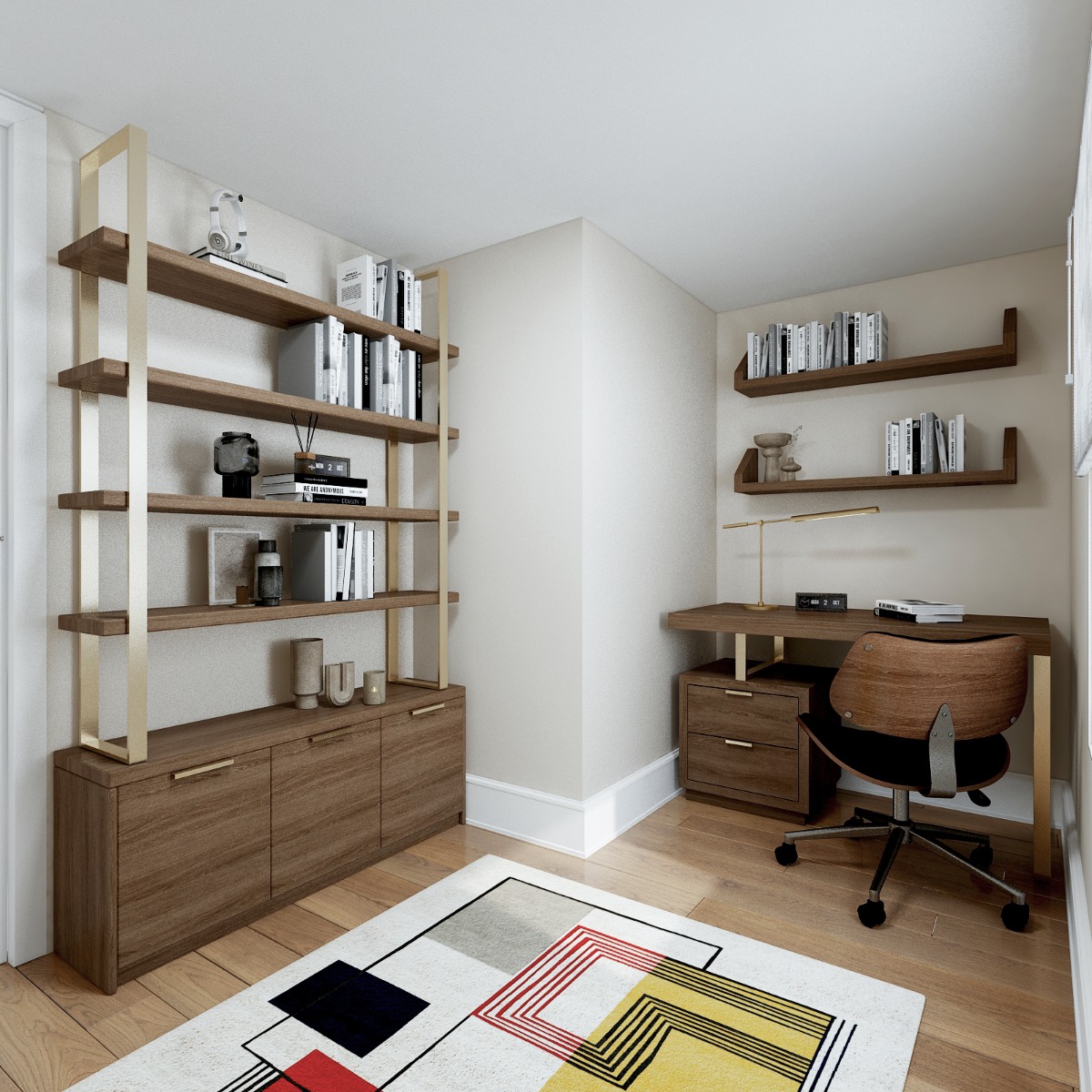
The integration of nature not only adds a layer of authenticity and serenity but also ensures that spaces feel grounded and connected to the outside world.
- Wood: Wood plays a significant role in both Western and Gothic designs, but in different capacities. In Western design, it's often raw, rugged, and unrefined, seen in exposed beams, hardwood floors, or rustic furniture. In Gothic design, wood takes on a more polished, ornate form, with dark stains and intricate carvings. Integrating both forms of woodwork can create a fascinating contrast and harmony in the space.
- Stone: Stone elements can add an earthy, solid feel to the interior. Gothic design might incorporate stone in more ornamental ways, such as carved stone fireplaces or sculptural elements. In Western design, stone is more likely to appear in its natural, unpolished state, as in a stone accent wall or slate flooring. The use of stone in both decorative and functional ways helps to ground the space and adds a tactile dimension.
- Plants and Greenery: Bringing in plants is a wonderful way to inject life and color into a Western Gothic space. Larger plants, like indoor trees or sprawling ferns, can soften the more dramatic Gothic elements and add a fresh, lively feel. Smaller plants, like succulents or herbs, can be placed in rustic pots or Gothic-style planters to blend the styles.
- Natural Light: In Gothic design, light often filters through stained glass, casting colorful patterns across the room. In Western design, natural light is more direct, showcasing the beauty of the natural materials used throughout the space. Balancing these two approaches to lighting, perhaps through the strategic placement of windows or the use of sheer drapes, can create a space that feels both mystical and grounded.
- Water Features: The sound and sight of water can add a calming, natural element to any space. In a Western Gothic theme, a small indoor fountain, possibly with Gothic-style sculptures or designs, can serve as a focal point and a source of soothing background noise.
- Natural Textiles and Fibers: Utilizing textiles like wool, cotton, leather, or linen can add warmth and texture to the space. These materials can be incorporated through area rugs, throw pillows, tapestries, or upholstery, providing comfort while also enhancing the natural aesthetic.
8. Personalization and Storytelling
Personalization:
- Family Heirlooms and Personal Collections: Incorporating family heirlooms or personal collections is a powerful way to add a personal touch to the Western Gothic theme. Whether it's an antique Gothic mirror passed down through generations or a collection of Western memorabilia, these items bring a sense of history and continuity.
- Customized Furniture and Art: Opting for custom-made furniture or commissioning artwork allows for the expression of personal style and ensures that each piece has a story. This could include a bespoke Gothic-style bookcase or a painting by a favorite Western landscape artist, each imbued with personal significance.
- Photographs and Personal Artifacts: Displaying personal photographs or artifacts is a direct way to add a personal narrative to the space. These could be artfully arranged in a gallery wall that mixes Gothic and Western frames, blending the styles while showcasing personal moments and memories.
Storytelling:
- Thematic Decor: The Western Gothic theme lends itself to storytelling through decor. Each element, from Gothic chandeliers to Western rugs, can be part of a larger narrative, perhaps reflecting one's travels, interests, or cultural heritage.
- Color and Texture: The use of color and texture can also tell a story. For instance, a deep red velvet couch might speak to a love of Gothic drama, while a weathered leather chair could reflect a connection to Western ruggedness. These choices can narrate a visual story of one's aesthetic preferences and experiences.
- Book and Music Collections: Books and music are not just for entertainment; they can be integral to the storytelling aspect of a room. A carefully curated bookshelf, featuring Gothic literature or Western histories, or a collection of music from different eras, can add layers to the room's narrative.
- DIY Projects and Crafts: Engaging in DIY projects or crafts allows for a deeply personal touch. This could include hand-painted Gothic-style wall art or a homemade quilt with Western motifs. These pieces not only personalize the space but also add a unique story of creativity and effort.
9. Sustainable and Ethical Choices
In blending the Gothic and Western styles, designers and homeowners are now more than ever focusing on how to make choices that are not only aesthetically pleasing but also environmentally responsible and ethically sound.
Sustainable Materials:
- Reclaimed Wood: Utilizing reclaimed wood, especially in furniture and architectural elements, is a perfect fit for the Western Gothic theme. It adds a rustic charm while also being eco-friendly. Reclaimed wood can be used for flooring, wall paneling, or furniture, adding character and reducing the need for new timber.
- Recycled Metals and Glass: In Gothic-inspired decor elements, such as lighting fixtures or decorative items, using recycled metals and glass reduces waste and conserves resources. These materials can add an antique, timeless feel that aligns well with the Gothic aspect of the theme.
- Natural Fibers: Opting for natural fibers like organic cotton, linen, or ethically sourced wool in textiles such as rugs, curtains, and upholstery is both sustainable and healthier. These materials are biodegradable and have a lower environmental impact.
Ethical Choices:
- Fair Trade and Ethically Sourced Products: Choosing products that are fair trade and ethically sourced ensures that the items are made under good working conditions and that artisans are paid fairly. This might include handcrafted decor items, textiles, or furniture.
- Local Artisans and Craftspeople: Supporting local artisans and craftspeople not only helps the local economy but also reduces the carbon footprint associated with transportation. It also allows for unique, handcrafted pieces that bring authenticity and personalization to the Western Gothic theme.
- Vintage and Antique Items: Incorporating vintage and antique items is both sustainable and fitting for the Western Gothic aesthetic. These pieces bring a sense of history and reduce the demand for new products, minimizing resource consumption.
Eco-Friendly Practices:
- Energy-Efficient Lighting: Choosing energy-efficient lighting options, such as LED bulbs, reduces energy consumption. In the Western Gothic theme, these can be incorporated into antique or Gothic-style fixtures to maintain the aesthetic.
- Low-VOC Paints and Finishes: Using low-VOC (volatile organic compounds) paints and finishes improves indoor air quality and is better for the environment. This consideration is especially important in preserving the health and well-being of the occupants.
- Water-Efficient Fixtures: In bathrooms and kitchens, installing water-efficient fixtures can significantly reduce water usage, aligning with sustainable practices.
10. The Art of Balancing Styles When Designing Your Home
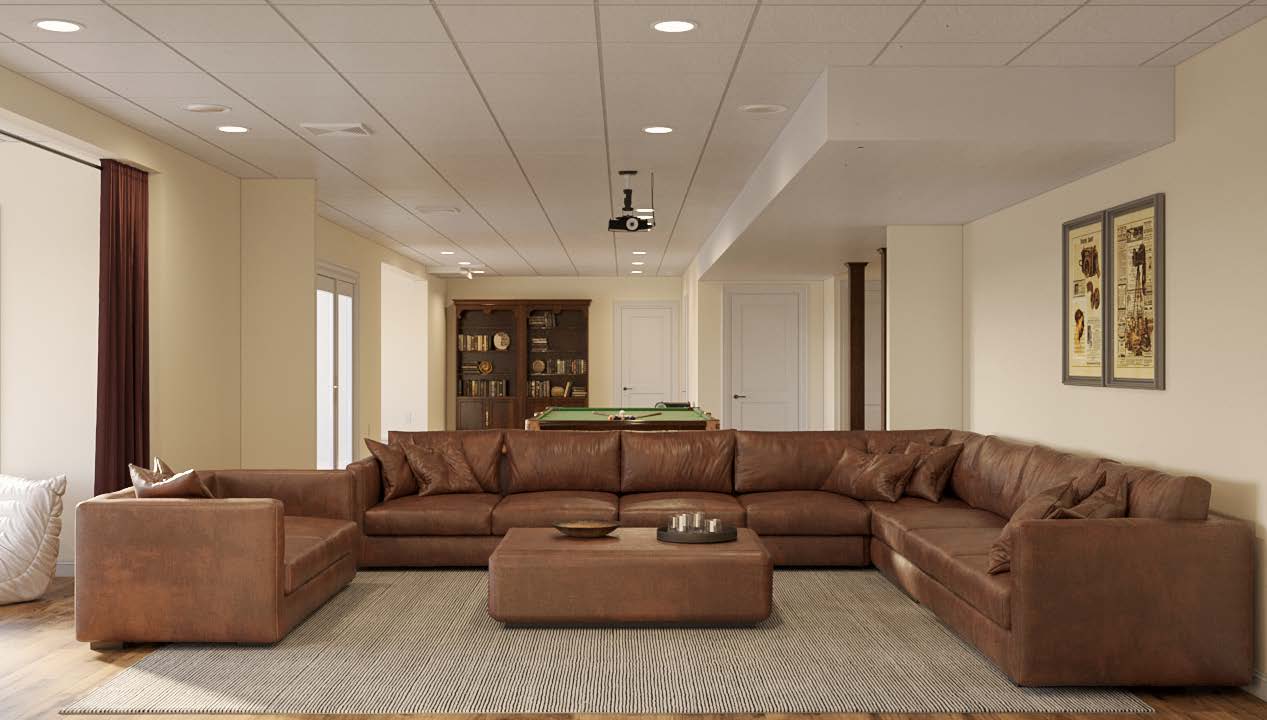
Understanding Each Style's Core Elements:
The first step in striking a balance is to understand the fundamental characteristics of both Gothic and Western styles. Gothic design is known for its drama, intricacy, and opulence, characterized by dark colors, rich textures, and elaborate patterns. In contrast, Western style celebrates simplicity, ruggedness, and a connection to nature, often featuring natural materials, earthy tones, and straightforward, functional designs. Recognizing these core elements allows for a strategic approach to blending them.
Creating Focal Points and Accents:
A well-balanced Western Gothic space should have clear focal points that anchor the design. This could be a Gothic-inspired statement piece, like an ornate chandelier, or a Western-style centerpiece, such as a large, rustic dining table. Around these focal points, smaller accents and decor can be used to bring in elements of the other style, ensuring that both Gothic and Western aesthetics are represented without overwhelming the space.
Balancing Proportions and Scale:
In a Western Gothic interior, the proportion and scale of furniture and decor items should be carefully considered. Gothic furniture often tends to be larger and more ornate, while Western pieces are generally more understated. Balancing these scales – perhaps by pairing a large Gothic bed with simpler, rustic bedside tables – can create a sense of harmony and proportionality in the room.
Layering for Depth and Cohesion:
Layering is another crucial aspect of balancing these styles. This could involve a mix of Gothic and Western accessories, like layering ornate Gothic mirrors with simple Western art, or combining luxurious Gothic fabrics with more understated Western textiles. This approach allows for a depth of design that feels intentional and curated
Conclusion: Embrace the Western Gothic Trend with Hestya
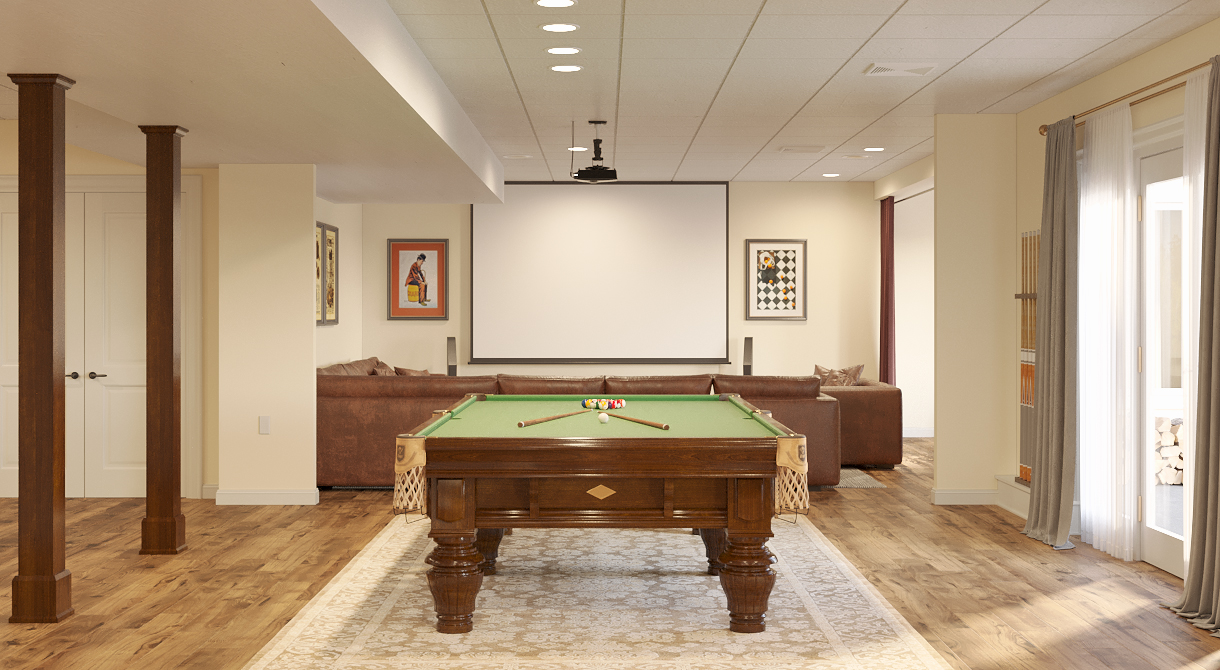
As we explore the captivating world of the Western Gothic theme in 2024's interior design trends, it's clear that achieving this sophisticated balance of styles requires skill and expertise.
Hestya's team of in-house expert designers is adept at navigating the complexities of blending Gothic and Western elements. They bring a wealth of knowledge and creativity, ensuring that each space is not only aesthetically pleasing but also a true reflection of the individual's style and preferences. Their expertise is crucial in making informed decisions about combining textures, colors, and furniture pieces to create a harmonious Western Gothic space.
Further enhancing the customization process, Hestya offers custom-made furniture. This service is particularly valuable in the Western Gothic theme, where the interplay of different styles often calls for unique pieces that can serve as focal points or harmonizing elements. Custom-made furniture allows for the perfect integration of Gothic opulence with Western simplicity, tailored to fit the specific dimensions and style of each client's space.
One of the most innovative aspects of Hestya's service is the use of scanning technology to skip traditional tape measurements. This technology ensures precise and efficient space planning, a critical aspect when dealing with the intricate details and proportions inherent in the Western Gothic design. It streamlines the design process, reducing the potential for error and making the experience more convenient and enjoyable for the client.
Check out our Style Quiz today and step closer to realizing your dream home, perfectly aligned with the exciting Western Gothic trend and your personal design aspirations.